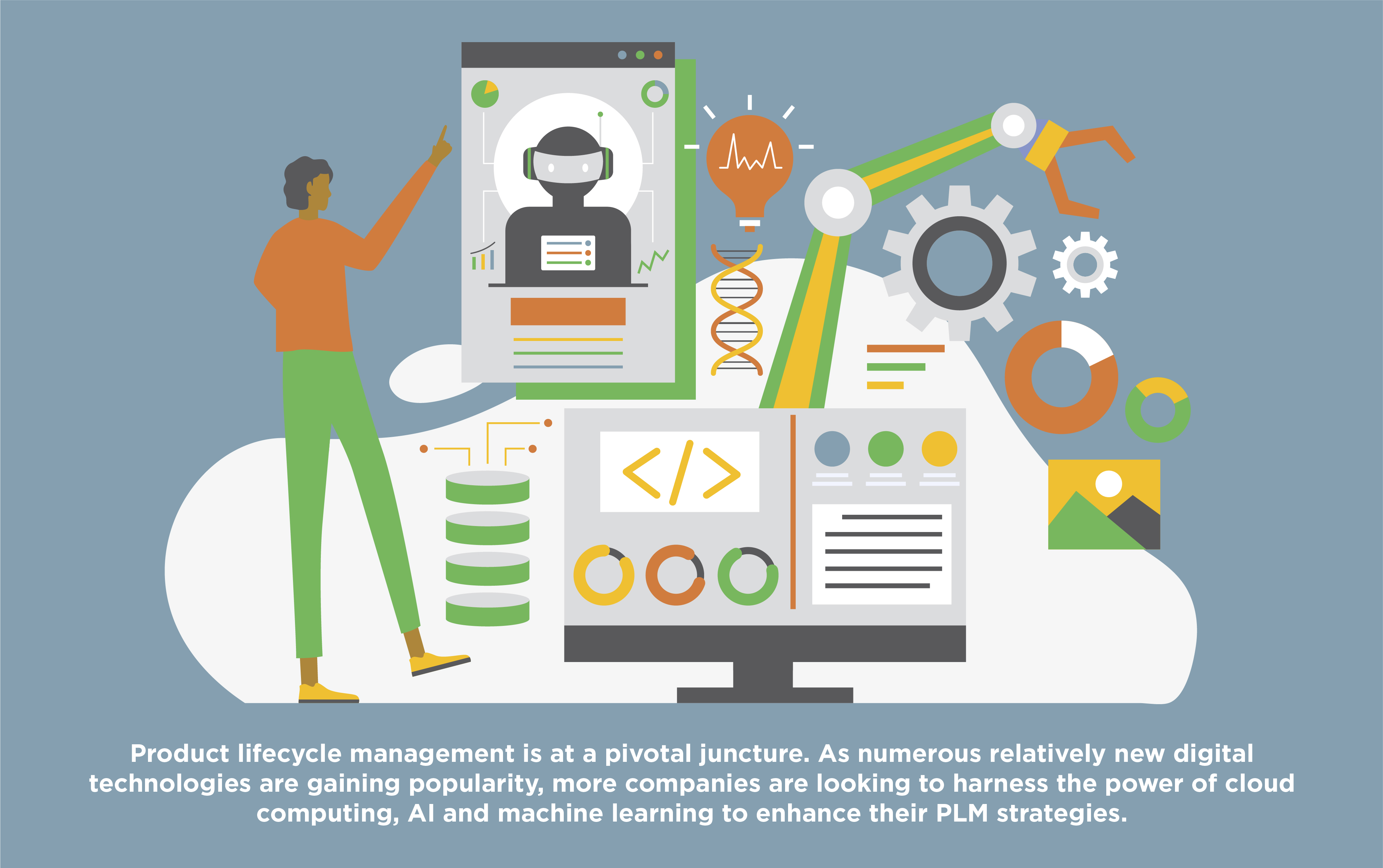Product lifecycle management (PLM) is at a pivotal juncture. As numerous relatively new digital technologies are gaining popularity, more companies are looking to harness the power of cloud computing, artificial intelligence (AI) and machine learning (ML) to enhance their PLM strategies.
Over the years, these PLM practices and supporting systems have evolved significantly, to the point that they are now integral parts of the business models of many organizations – not just manufacturers. Worth slightly more than $18 billion in 2018, the global PLM solution market is expected to top $26 billion by 2023, according to Quadrant Knowledge Solutions.
This expansion means that new trends and challenges in PLM have wide-reaching implications. Let’s look at some of the major ones to keep an eye on in the 2020s.
1. Digital twins and digital threads turbocharge the product lifecycle
Digital twins are virtual representations of physical systems and processes, displaying all of the attributes and workflows associated with them. Each digital twin provides an easily graspable model of something tangible, which can help in not only understanding how it works currently but how it might evolve over time as well.
Similar to digital twins, digital thread are virtual representations, but in this case of a communication flow related to a digital twin. Digital threads offer traceability of a digital twin back to its specifications. They link together different product, performance and supply chain data, to provide a straightforward yet comprehensive model of a real-world product’s lifecycle.

2. Investment in PLM cloud solutions continues to ramp up
Many companies have opted to move on from their on-premises PLM solutions in favor of cloud-based services. According to the 2021 CIMdata PLM Foresight Poll, all respondents had increased their cloud investments in the wake of the COVID-19 pandemic.
PLM cloud solutions offer distinct advantages over traditional PLM systems:
- Relatively low total cost of ownership.
- Flexibility, with numerous possible integrations.
- Regularly scheduled software updates.
- Superior resource scalability (scale up or down as needed).
- Simplified software licensing.
- Accelerated deployment and modification.
- Out-of-the-box functionality.
The move to cloud-based PLM has coincided with the shift to cloud software across other core business operations, including in enterprise resource planning and customer experience (ERP and CX, respectively).
3. Aging infrastructure highlights the need for fresh investment
A big part of PLM is recognizing when certain products and services are in decline and thus in need of replacement. The winter weather that caused major problems for the Texas state electricity grid is a case in point.
Although there were attempts to pin the widespread outages in Texas on the perceived unreliability of renewable energy sources like wind and solar, the reality was that aging fossil fuel infrastructure was at fault. Natural gas pipelines that had not been winterized froze in the unseasonably cold temperatures, choking off a vital source of fuel.
The ransomware attack on a major refined oil pipeline, Colonial Pipeline, illustrated another liability in critical infrastructure, namely, its vulnerability to cyberattacks. Modernization via expert PLM will be essential in thinking about the way forward.
In 2021, the mean age of a power transformer in the U.S. was 25 years, while transmission lines averaged 30 years, according to The American Prospect. Hundreds of billions of dollars in upgrades will be needed to ensure sustainable infrastructure in the years to come. PLM platforms will ensure detailed planning and proper execution for new additions to the grid.
Inspirage is an experienced Oracle partner with expertise across PLM, ERP, supply chain and more. As your organization thinks about the next steps on its PLM journey, our expert team is here to help. Contact us to learn more about how we can implement the right Oracle solutions for your business requirements.